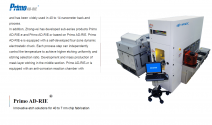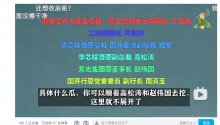50 mm thick 6 inch silicon carbide single crystal growth was successful
Recently, Zhejiang University Hangzhou International Science and Technology Center Advanced Semiconductor Research Institute-Dry Crystal Semiconductor Joint Laboratory and Zhejiang University State Key Laboratory of Silicon Materials, under the funding of Zhejiang Province's "Jianbing Program" and other research and development projects, have successfully grown a thickness of 50. mm 6-inch silicon carbide single crystal (Figure 1), which is the first report in China. This important development means that the cost of silicon carbide substrates is expected to be greatly reduced, and the development of the semiconductor silicon carbide industry may usher in new opportunities for development.

Double the thickness! The high cost of silicon carbide single crystal is expected to be reduced
Silicon carbide (SiC) single crystal, as a wide-bandgap semiconductor material, is crucial to the development of high-voltage, high-frequency, high-temperature, and high-power semiconductor devices. At present, the high cost of silicon carbide single crystal is the main factor restricting the large-scale application and development of various silicon carbide semiconductor devices. In order to reduce the cost of SiC single crystal, it is an effective way to enlarge its diameter and increase its thickness .
At present, the diameter of domestic SiC single crystal has generally reached 6 inches, but its thickness is usually between ~20 - 30 mm , resulting in a relatively limited number of SiC substrate sheets obtained by slicing a SiC ingot.
So how can we increase the thickness? Where is the difficulty? According to the researchers, the main challenge for increasing the thickness of SiC single crystal lies in the increase of the thickness during growth and the change of the thermal field inside the growth chamber caused by the consumption of source powder . In response to the challenges, Zhejiang University Hangzhou International Science and Technology Innovation Center Advanced Semiconductor Research Institute-Dry Crystal Semiconductor Joint Laboratory and Zhejiang University State Key Laboratory of Silicon Materials have designed a new thermal field for silicon carbide single crystal growth equipment and developed new methods for silicon carbide source powder. The technology and the development of a new process for the growth of silicon carbide single crystals have significantly increased the growth rate of silicon carbide single crystals, and successfully grown a 6-inch silicon carbide single crystal with a thickness of 50 mm.
The realization of this thickness, on the one hand, saves the consumption of expensive silicon carbide seed crystals, and on the other hand doubles the number of silicon carbide substrate sheets obtained by slicing one silicon carbide single crystal ingot, so it can greatly reduce the cost of silicon carbide substrates. The cost is expected to effectively promote the development of the semiconductor silicon carbide industry.

The thickness is increased, can the quality be guaranteed? The researchers analyzed the silicon carbide substrate sheet (Fig. 1) obtained by slicing the grown silicon carbide single crystal ingot and found that its crystal form was 4H, and the average width at half maximum of the X-ray diffraction peak of the typical (0004) crystal plane was 18.47 arcseconds, with a total dislocation of 5048/cm -2 (Fig. 2). All the above results show that the crystal quality of SiC single crystal has reached the industry level.

Work together to solve problems
The report of the Zhejiang Provincial Party Congress proposed that to promote the deep integration of the innovation chain and industrial chain, it is necessary to speed up the construction of a modern scientific and technological innovation system and industrial system. How to use the advantageous resources of Zhejiang University Hangzhou International Science and Technology Innovation Center to help solve common technical problems? The Hangzhou International Science and Technology Innovation Center of Zhejiang University has been exploring.

The Hangzhou International Science and Technology Innovation Center of Zhejiang University has been committed to promoting the in-depth integration of industry, academia and research, deepening cooperation with enterprises, linking global innovation resources, carrying out high-level and high-quality results transformation, and jointly building an innovation consortium. At present, the center has established an innovation consortium with more than 10 enterprises, and the Advanced Semiconductor Research Institute of Zhejiang University Hangzhou International Science and Technology Innovation Center-Dry Crystal Semiconductor Joint Laboratory is one of them.
This achievement was jointly completed by Zhejiang University Hangzhou International Science and Technology Center Advanced Semiconductor Research Institute-Dry Crystal Semiconductor Joint Laboratory and Zhejiang University State Key Laboratory of Silicon Materials, which is the embodiment of technological innovation and industrial innovation. Faced with the cost of silicon carbide single crystal, which is highly concerned by the industry, the research team focused on the thickness of silicon carbide single crystal and fully integrated the advantages of Zhejiang University Hangzhou International Science and Technology Center Advanced Semiconductor Research Institute and Zhejiang University State Key Laboratory of Silicon Materials. It has worked together to tackle key problems and achieved phased results, contributing to the development of semiconductor silicon carbide technology.
Recently, Zhejiang University Hangzhou International Science and Technology Center Advanced Semiconductor Research Institute-Dry Crystal Semiconductor Joint Laboratory and Zhejiang University State Key Laboratory of Silicon Materials, under the funding of Zhejiang Province's "Jianbing Program" and other research and development projects, have successfully grown a thickness of 50. mm 6-inch silicon carbide single crystal (Figure 1), which is the first report in China. This important development means that the cost of silicon carbide substrates is expected to be greatly reduced, and the development of the semiconductor silicon carbide industry may usher in new opportunities for development.

Double the thickness! The high cost of silicon carbide single crystal is expected to be reduced
Silicon carbide (SiC) single crystal, as a wide-bandgap semiconductor material, is crucial to the development of high-voltage, high-frequency, high-temperature, and high-power semiconductor devices. At present, the high cost of silicon carbide single crystal is the main factor restricting the large-scale application and development of various silicon carbide semiconductor devices. In order to reduce the cost of SiC single crystal, it is an effective way to enlarge its diameter and increase its thickness .
At present, the diameter of domestic SiC single crystal has generally reached 6 inches, but its thickness is usually between ~20 - 30 mm , resulting in a relatively limited number of SiC substrate sheets obtained by slicing a SiC ingot.
So how can we increase the thickness? Where is the difficulty? According to the researchers, the main challenge for increasing the thickness of SiC single crystal lies in the increase of the thickness during growth and the change of the thermal field inside the growth chamber caused by the consumption of source powder . In response to the challenges, Zhejiang University Hangzhou International Science and Technology Innovation Center Advanced Semiconductor Research Institute-Dry Crystal Semiconductor Joint Laboratory and Zhejiang University State Key Laboratory of Silicon Materials have designed a new thermal field for silicon carbide single crystal growth equipment and developed new methods for silicon carbide source powder. The technology and the development of a new process for the growth of silicon carbide single crystals have significantly increased the growth rate of silicon carbide single crystals, and successfully grown a 6-inch silicon carbide single crystal with a thickness of 50 mm.
The realization of this thickness, on the one hand, saves the consumption of expensive silicon carbide seed crystals, and on the other hand doubles the number of silicon carbide substrate sheets obtained by slicing one silicon carbide single crystal ingot, so it can greatly reduce the cost of silicon carbide substrates. The cost is expected to effectively promote the development of the semiconductor silicon carbide industry.

The thickness is increased, can the quality be guaranteed? The researchers analyzed the silicon carbide substrate sheet (Fig. 1) obtained by slicing the grown silicon carbide single crystal ingot and found that its crystal form was 4H, and the average width at half maximum of the X-ray diffraction peak of the typical (0004) crystal plane was 18.47 arcseconds, with a total dislocation of 5048/cm -2 (Fig. 2). All the above results show that the crystal quality of SiC single crystal has reached the industry level.

Work together to solve problems
The report of the Zhejiang Provincial Party Congress proposed that to promote the deep integration of the innovation chain and industrial chain, it is necessary to speed up the construction of a modern scientific and technological innovation system and industrial system. How to use the advantageous resources of Zhejiang University Hangzhou International Science and Technology Innovation Center to help solve common technical problems? The Hangzhou International Science and Technology Innovation Center of Zhejiang University has been exploring.

The Hangzhou International Science and Technology Innovation Center of Zhejiang University has been committed to promoting the in-depth integration of industry, academia and research, deepening cooperation with enterprises, linking global innovation resources, carrying out high-level and high-quality results transformation, and jointly building an innovation consortium. At present, the center has established an innovation consortium with more than 10 enterprises, and the Advanced Semiconductor Research Institute of Zhejiang University Hangzhou International Science and Technology Innovation Center-Dry Crystal Semiconductor Joint Laboratory is one of them.
This achievement was jointly completed by Zhejiang University Hangzhou International Science and Technology Center Advanced Semiconductor Research Institute-Dry Crystal Semiconductor Joint Laboratory and Zhejiang University State Key Laboratory of Silicon Materials, which is the embodiment of technological innovation and industrial innovation. Faced with the cost of silicon carbide single crystal, which is highly concerned by the industry, the research team focused on the thickness of silicon carbide single crystal and fully integrated the advantages of Zhejiang University Hangzhou International Science and Technology Center Advanced Semiconductor Research Institute and Zhejiang University State Key Laboratory of Silicon Materials. It has worked together to tackle key problems and achieved phased results, contributing to the development of semiconductor silicon carbide technology.
Last edited:



